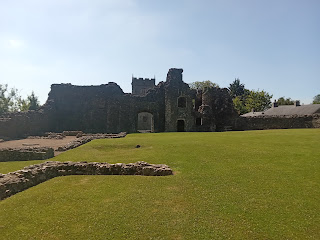EMPIRE is a strategy boardgame set in an extended Mediterranean world - India comes into play - starting in 350 BC.
Over 200 years, lasting 20 turns, Carthaginians, Romans, Macedonians and Persians/Parthians battle for supremacy.
Each turn starts with a a two-dice roll to determine which controlled province, if any, revolts.
Then each of the four powers gets to launch a campaign, the order of launching being chosen randomly.
A campaign consists of invading a neighbouring province - there are 22 in all - with the result decided by a die roll, with modifiers, 4 or better being needed for the campaign to be successful.
So far, so simple, but a complicating factor is the appearance of great captains - Macedon's Alexander the Great in turns two and three, Carthage's Hannibal in turn 14 and Rome's Scipio the Younger in turns 15 and 16.
Great captains can launch five campaigns a turn, instead of the usual one, provide a +2 die modifier and usually are not affected by a -1 modifier that would otherwise apply for attacking a controlled province.
There are other special rules, which I will cover when they apply, but basically that is it.
Victory points are awarded halfway through the game, ie at the end of move 10, and at the finish, the end of move 20.
 |
| Most provinces are in red, but four are in white, denoting the four powers' homelands |
Each province controlled at the end of moves 10 and 20 is worth a point, except those in capitals (IBERIA, AFRICA, ITALIA, AEGYPTUS and INDIA), which are worth two points.
ITALIA is a special case. If Rome's control over it is consolidated - more on that later - it is worth three points.
Some of the provinces have slightly strange names, eg "Asia" covers only part of Asia Minor, and "AFRICA" is really just Greater Carthage, but this is easily taken on board.
At the start of the game the Persians control eight provinces (west to east: Asia, Pontus, Syria, Armenia, Mesopotamia, Persia, Parthia and Bactria), the Carthaginians control three (AFRICA, Numidia and IBERIA), while the Macedonians and Romans have only their homelands.
Along the bottom of the map is the Victory Points Track. Rome and Macedon start at zero, but Carthage and Persia, reflecting their past imperial success, begin at 12.
Anyone used to playing complicated boardgames by Avalon Hill, SPI, etc, may be astounded a game can seem so simple, and really Empire is simple.
But I hope to show it can also be enjoyable, especially for anyone with an interest in ancient history.
The game can be played by one to four people, but what particularly attracted me to it is the idea of playing it solo and watching history, or at least an alternate history, unfold.
TURN ONE (350-340 BC)
 |
The map at the start with counters in place
|
The revolt dice-rolls pinpoint Cisalpina, but since that starts as an independent province there is no effect.
Macedon is drawn first. Lines of invasion from Macedonia show a campaign can be launched against Illyria to the northwest, Graecia to the south and Thracia to the east. Since Macedonian control of Graecia is vital for getting the best out of Alexander the Great on the next two turns, the Macedonians, presumably in the form of Alexander's father Philip, invade there, succeeding on a roll of 5.
Carthage is up next. It can attack Gallia from IBERIA or Sicilia from AFRICA. Carthage has a special campaign modifier of -1 if attacking outside of its starting empire, which means a 5 rather than a 4 is needed. But further modifiers are in play. Any attack on Gallia, or Cisalpina for that matter, on turns one to 10 suffers a -1 modifier, representing "tribal ferment," so Carthage would need a 6 to succeed, meaning the odds are 5-1 against. An attack on Sicilia is not affected by restless tribes, but it involves a sea crossing (the route is shown in blue to emphasise this). A campaign with such a crossing requires an extra roll, with 1 or 2 indicating the invasion never arrives (the fleet is deemed lost in a storm or naval battle). So to succeed the Carthaginians will have to pass a two-in-three chance (rolling 3 or higher) and a one-in-three chance (rolling at least a 5 as Sicilia is outside their starting empire). That works out at two chances in nine of succeeding, or 7-2 against. Accordingly the Carthaginians set sail, successfully landing in Sicilia (they roll a 4), but miserably failing to conquer the island (a roll of 1).
Next up is Persia. They could attack Thracia, INDIA or AEGYPTUS, but the Pesians suffer a -2 modifier for attacking anywhere except AEGYPTUS that starts outside their empire. That makes the decision simple, and they take the land of the pharaohs on a roll of 5, meaning the Persians now have nine provinces.
The Romans begin the game in control of ITALIA, but before they can expand they must successfully consolidate their control with a special internal campaign that requires a die roll lower than the turn number. Since this is turn one, the Romans effectively pass.
 |
| Situation after turn one - Persia has gained AEGYPTUS (worth two points if they have it at the end of turn 10) and Macedon has conquered Graecia (worth 'only' one point at the end of turn 10, but important for Macedonian success in turns two and three) |
.jpg)


.jpg)














































